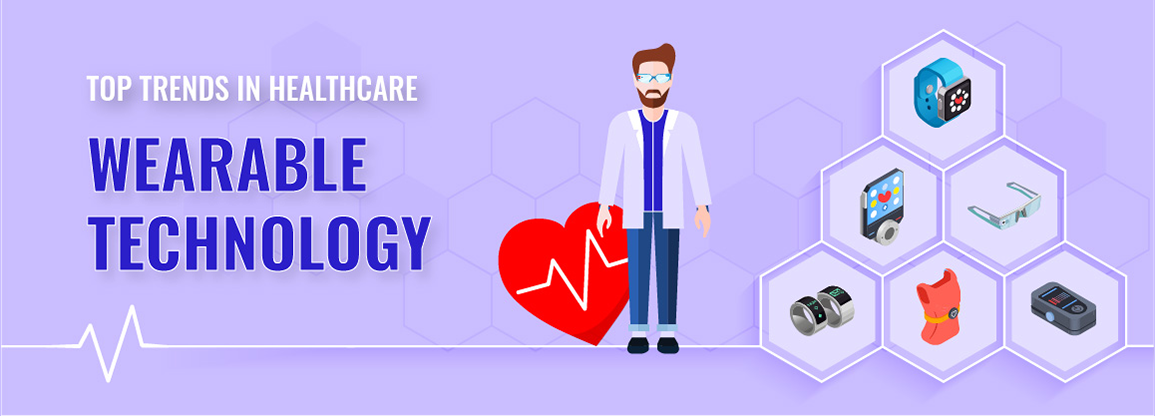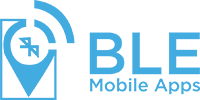Top Trends in Healthcare Wearable Technology
- by BLE Mobile Apps

Wearable technology trends in healthcare and fitness have paved their way into society so that smartwatches and FitBits are viewed as mainstream gadgets. The future of wearable devices will only continue to rise without slowing down. There is an increasing demand of users to look after their health, and the usage of wearable technology has increased more than thrice in the past couple of years. According to Business Insider Intelligence’s research, above 80% of the users are ready to try out wearable fitness technology.
This growing demand for wearable devices in healthcare has created a flourishing market. Presently, insurers and companies are getting the picture of how delivering wearable health technology to their consumers and employees is advantageous.
What is wearable healthcare technology?
Wearable technology in healthcare comprises electronic devices that consumers can wear, like FitBits, smartwatches, and many more. They are designed to gather the users’ data relating to personal health, exercise, and other activities.
Wearables Statistics
According to Business Insider Intelligence research, healthy corporate culture has reduced employee throughput. Employees with five or more healthy ‘best practices’ had 18% average turnover compared to 29% of those with two or lesser. US consumer usage of wearable devices has surged from 9% to 33% in just four years. This percentage will continue to rise as wearable technology tends to become even more conventional. According to Accenture’s survey, the US consumer usage of wearable apps and fitness wearables spiked from 9% in 2014 to 33% in 2018.
Examples of Wearable Devices in Healthcare
The wearable devices app development and technology have increased consumers’ demand to monitor their health has persuaded the medical industry. It includes the insurers, service providers, and technology companies for wearable device development such as Fitbits, smartwatches, and wearable monitors in the form of bracelets and rings.
Technology, particularly wearable technology, keeps on introducing innovations that test the limits of our healthcare system. Among all of the advancements, a few chief areas stand out.
1. Sleep Aids
Consumers are also monitoring their sleep patterns with smartwatches. With the increasing awareness of the role of proper sleep in upholding good health, various devices monitor and offer real-time feedback on sleeping patterns. Smartwatches like FitBit and Omron Zero help track the user’s sleeping patterns through the wearable device and integration with wearable apps. Once the data is collected, it will provide analytics on your sleep and advice on getting optimal sleep.
2. Movement
Recovering your muscular or skeletal system with aid was thought to be a figment of imagination, whereas now it has become a reality. Companies are developing tools that combine gaming features into smart gloves and smart boards. It helps the patients to engage better with rehab actively, leading to a quicker recovery time.
3. Blood Sugar Recorders
Monitoring blood sugar for patients from wearable technology has benefitted a considerable number of patients. Instead of a blood glucose testing device, manufacturers have made the whole set into a smartwatch. By pressing a button, a micro-needle pricks underneath the skin and gathers data on blood sugar levels. The watch then displays the information and uploads the data to a specific integrated companion wearable apps.
4. Pain Management
Pain monitoring and management is an exciting area where wearable technology finds its application. A wearable device that actively monitors electroencephalogram (EEG) readings send feedback on the patient’s discomfort or pain levels. It creates content on a linked tablet intending to distract the user from the pain sensations. Clinical trials have also stated a significant level of satisfaction with the respective technology.
5. VR
Virtual reality has profound applications in healthcare like training the doctors in advanced surgical techniques, teaching the basics to students in a more interactive visual methodology, doctor and patient communication, which also include applications in pain management. It can perform remote surgeries in hard to reach areas or climatic conditions when VR is integrated into surgical systems.
Conclusion
Wearable technology will carry on making advances from simple monitoring devices and moving beyond. Companies are also witnessing benefits in providing their employees with wearable healthcare technology. Furthermore, the device connectivity will extend to precise wearable sensors being developed that open the door for insurers and employers. It influences healthy lifestyles and boost profitability.
For iOS and android wearable devices app development, get in touch with our experts to gain more info.
